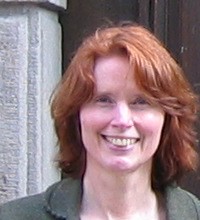You did some writing into your emotions today for your writing journal. Most of the prompts you have been writing into this term are connect in some way to patterns psychologists have identified as in some way related to how we categorize memories. Smells, personal associations, bodily sensations/traumas, emotions and so on are all part of the "old brain's" methods for organizing/recollecting experience so it is available to us at the point of need. After we discussed the readings - you began to analyze some of your entries to your journals. In these exercises you took a look at which processes for "remembering" or "connecting to" your memories/experiences worked best for you. You counted which kinds of prompts got the most ideas, and you did some reading to assess which prompts gave you the "best" material. Then you began to look for patterns: you looked for repeating images/language and topics, and if we'd had time you would have looked for repeats in particular stories and concepts. Hopefully this writing gave you some new ways to look at your journal. From your comments, it sounded like some of you were able to use these techniques to see patterns/ideas in your journal entries that might have gone unnoticed with a less analytic reading.
Keep working on writing into a topic for your draft for your personal essay. If anyone is stuck - or wants to talk through some ideas, bring your writing so far to my office for a conference.
For the next week or so we are going to be thinking about "truth" and we are going to start with the O'Brien piece. Hopefully you all have a copy by now. For your Blog - write about what you see as the "truth" in this story. What kind of truth is it? Is it a valuable truth? How can you tell it is true? And is it creative nonfiction or just fiction?
See you Wednesday.
Adrift Film Gratuit A Voir
4 years ago
